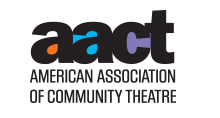Theatre Terms
 As a service to the theatre community, AACT provides over 1000 definitions of theatrical terms. Fully searchable, our glossary is helpful for technical staff, directors, actors, producers, or anyone wanting to better understand the inner workings of theatre.
As a service to the theatre community, AACT provides over 1000 definitions of theatrical terms. Fully searchable, our glossary is helpful for technical staff, directors, actors, producers, or anyone wanting to better understand the inner workings of theatre.
HOW TO SEARCH:
Click on a letter (A-Z) below to find terms beginning with the specified letter, OR enter a word in "Search for Term" OR search by entering a word in "Words in Definition." For example, entering the word "curtain" would display all words whose definition includes that word. (Note: If the A-Z or word search has been activated, it must be reset before using "Search for Term" or "Words in Definition." To reset the A-Z search: Click Here)
| Term | Definition | Link |
|---|---|---|
| TAB | 1) Originally a "tableaux curtain" which drew outwards and upwards, but now generally applied to any stage curtains including a vertically flying front curtain (house tabs) and especially a pair of horizontally moving curtains which overlap at the center and move outwards from that center. 2) Short for tabloid, referring to a condensed version of a show. | |
| TAB DRESSING | Lighting focused onto the house tabs. | |
| TEASER | Border, usually black, set behind the proscenium and linked with tormentors to form an inner frame to the stage, and to mask the upper parts of the fly tower. | |
| TECH | ||
| TECHIE | A stage technician. Some find this term endearing, others think it demeaning. | |
| TECHNICAL REHEARSAL or TECH REHEARSAL | Usually the first time the show is rehearsed in the venue, with lighting, scenery and sound. Costumes are sometimes used where they may cause technical problems (e.g. Quick changes). Often a very lengthy process. Often abbreviated to "the tech." | |
| THESPIAN | Pertaining to acting, or an actor, as in "she is a true thespian." Derived from the name of Thespis, a Greek tragic poet of the sixth century BC, who is said to have first introduced an actor into dramatic presentations, which until then had been performed only by a chorus with a leader. | |
| THROW | Distance between a light source (e.g. lantern or projector) and the actor or object being lit. | |
| THROW AWAY or THROW-AWAY | To underemphasize or underplay lines or stage business, either deliberately (in order to bring out other lines or business by contrast) or aimlessly (from weakness of technique). Thus, to throw away one's lines, or a throw-away line. | |
| THROW LINE | A rope used to hold adjacent flats together as one via cleats. | |
| THRUST | Form of stage that projects into the auditorium so that the audience are seated on at least two sides of the extended piece. | |
| THUNDER SHEET | Large suspended steel sheet with handles which produces a thunder-like rumble when shaken or beaten. | |
| TOP HAT | Cylinder of metal inserted into color runners on the front of a Par Can or other lantern to limit spill light. | |
| TORMENTORS | Narrow masking flats adjacent and sometimes at right angles to the proscenium arch. | |
| TRANSDUCER | A device that converts energy from one form to another. A microphone is a transducer that converts sound wave energy into electrical pulses. | |
| TRANSFORMATION | An instant scene change, often effected by exploiting the varying transparency of gauze under different lighting conditions. | |
| TRANSVERSE | Form of staging where the audience is on either side of the acting area. | |
| TRAP | An opening through the stage floor. A grave trap is a lowered rectangular section used in Hamlet etc. A cauldron trap is a simple opening through which items can be passed into a cauldron on stage. A star trap is a set of triangular sprung flaps in the stage floor through which an actor can be propelled from a lift below stage. | |
| TRAP ROOM | The area directly below the trapped part of the stage. Used for accessing the traps. | |
| TRAVELER | A draw curtain that opens and closes from one side only. |




